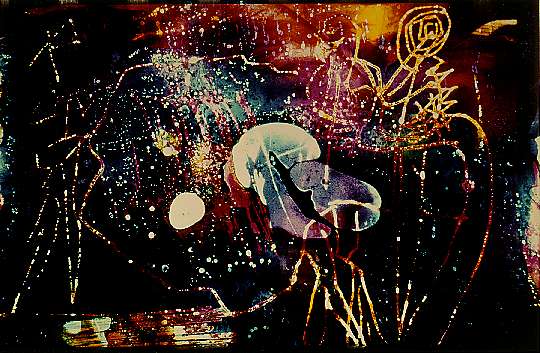Dr. Reinhold Mißelbeck is head of the photography department in the Ludwig Museum in Cologne. The following text in its original version was written as a statement to an application from Lips for a scholarship from the Krupp-Stiftung. With the removal of the last paragraph, this text was also used as the catalogue text for the exhibition “Transformations of a Dual Nature” (Wandlungen einer Doppelnatur) in Cologne in 1986. During this time the museum also purchased several works from Lips.
Dr. Reinhold Mißelbeck
Roger Lips’ Photographs
Roger Lips’ photographs captivate by their diverse approaches in dealing with a problem. They unite a portrait series, a series of scenes from daily life as well as a sequence of nearly abstract color compositions, which at the first glance seem to be three different themes and methods. But after further consideration, the viewer recognizes that there are three different visual manifestations of one and the same approach to a subject.
 |
 |
 |
 |
 |
 |
 |
 |
 |
 |
The portraits are changed in color, scratched on the negative and drawn over; they no longer describe an individual, but rather types and characters. They exchange the loss of individuality for the principle of déjà-vu, the supposed recognition of a person, a facial expression that seems to be familiar. Everyone has experienced this. Our opinion of other people at the first meeting is strongly influenced by details of recognition of physiognomical details, certain movements, of facial expressions and behavior that are well-known to us from other people we know.
However the changes to the faces in Roger Lips’ pictures not only serve for the de-individualization. They go beyond that to the basic portrayal and the exaggeration of that which the artist recognized in the person as characteristic and typical.
The photographs of groups of people in vaguely definable rooms are aimed in the same direction as well. The concreteness of the situation is eliminated through the unfocused aspect of the photo, through the overlaying and alterations in color.
 |
 |
|
Out of an instant which the camera has captured, a situation with a human touch becomes something absolute, which has permanence and validity. Different than in the portraits, here it is the environment, the feeling in rooms and in the company of others which define the persons. The last group of the abstract photos seems in a special way not to belong to this theme.
One thinks at first of Heinz Hajek-Halke, Chargesheimer or Manfred Kage. But the starting point for every one of these pictures is a portrait, which – through various manipulations – has been given a new environment, a new form. They are to be viewed as the antithesis of the previous groups, in which the human face can only be suspected beneath the layer of the individual re-working by the artist.
 |
||
It is right here that it becomes clear that the context of the three groups is necessary, in order to properly interpret the individual picture. Viewed all on their own, one could tend all too easily to draw parallels to other contemporary approaches. In the overview the three styles of representation mutually explain and combine themselves into an entirety.